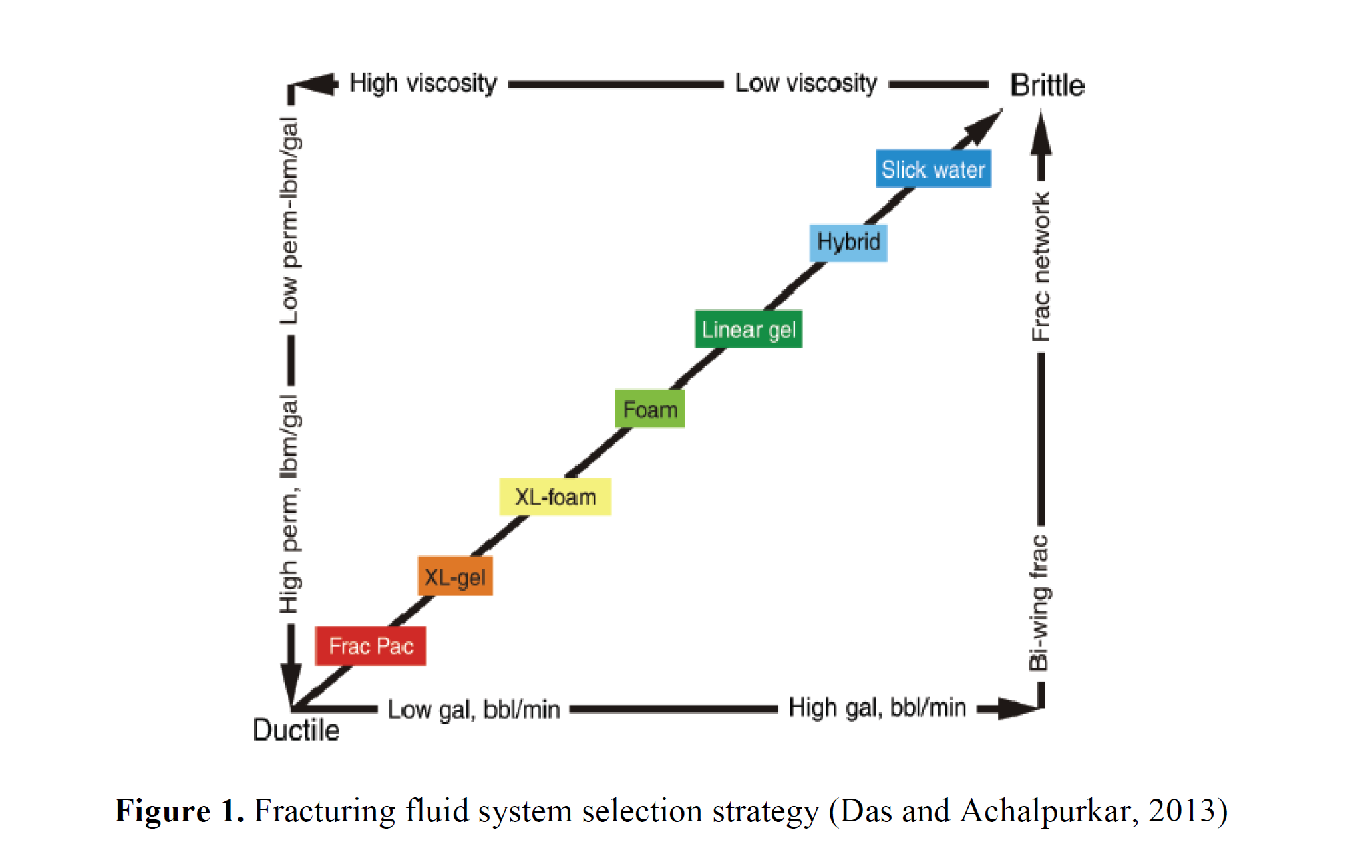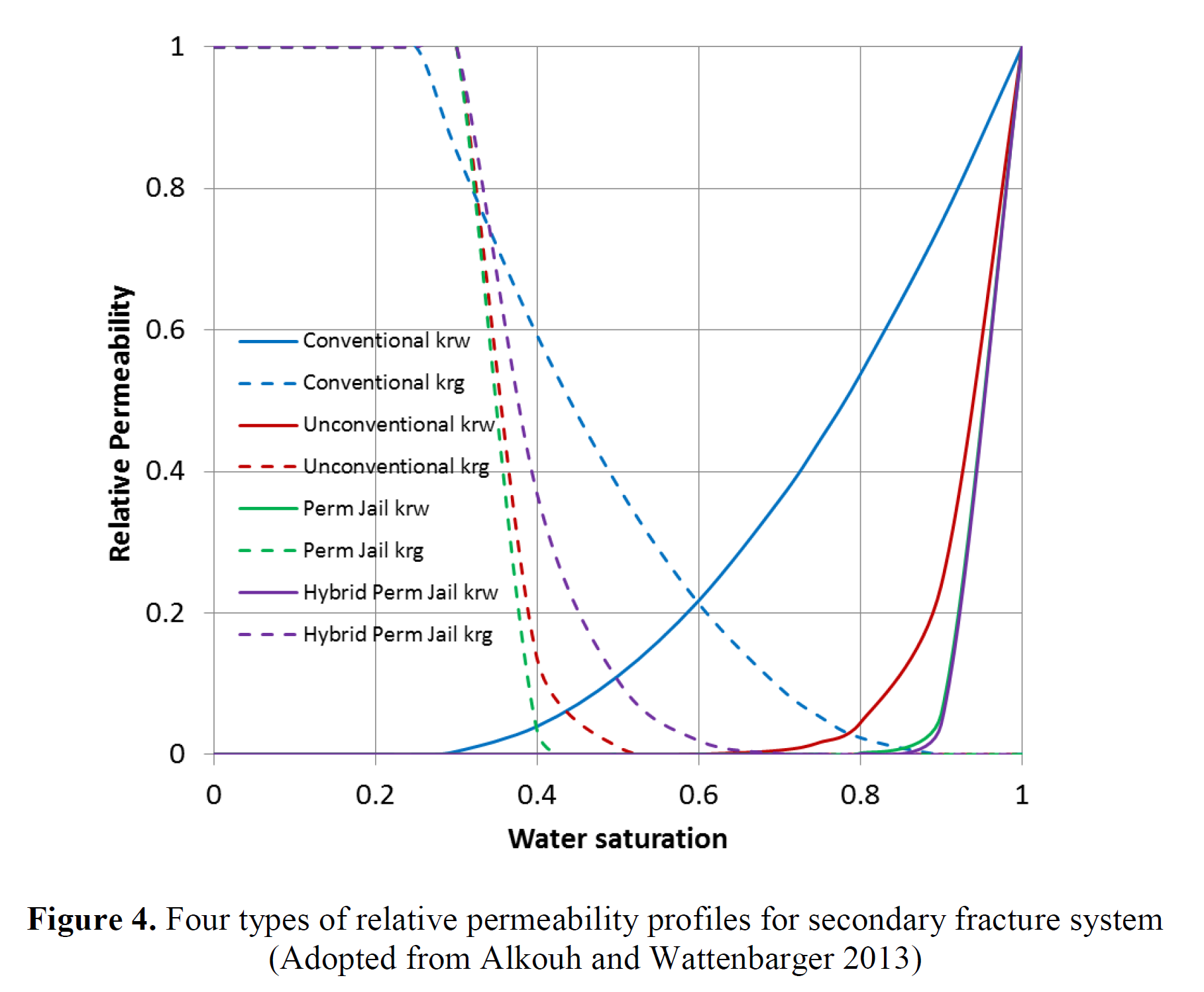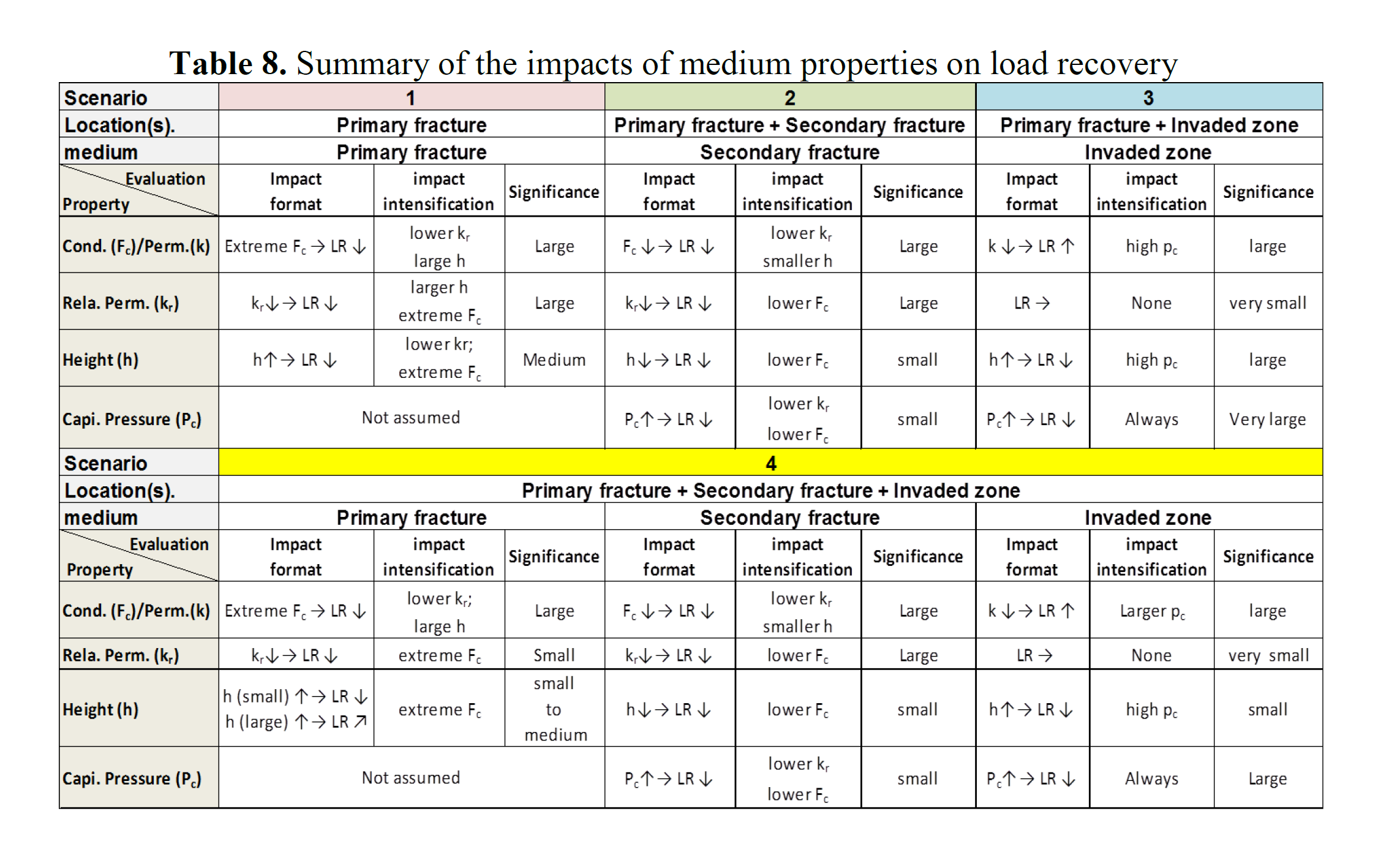MODEL FOR FRACTURING FLUID FLOWBACK AND CHARACTERIZATION OF FLOWBACK MECHANISMS
ABSTRACT
A large volume of fracturing fluid that may include slick water and various sorts of additives is injected into shale formations along with proppant to create hydraulic fractures which define a stimulated shale volume a shale gas well will actually drain. While in hydraulic fractures in conventional reservoirs most of the injected fracturing fluid flows back quickly, field observations have reported that load recovery from shale gas wells occurs over a long period, and in some shale formations only a small fraction of total injected fluid is recovered.
An unresolved question is whether unrecovered injected fluids are detrimental to well performance. This study emphasizes three main aspects: the location of injected water after fracturing treatment; the mechanisms of water retention underground; and the mechanisms behind the observed flowback behavior.
To locate the injected fracturing fluid we cataloged the possible fracture types including the main propped fracture and secondary fractures that may or may not be filled with injected fluid or proppant or even hydraulically connected. The investigation of factors impacting water retention will consider formation properties and fracture configurations of the cataloged locations for injected water and will evaluate the degree to which each factor plays. Finally, we will model long term flowback and formation flow behavior and mechanisms in order to quantify fundamental implications of retained water on well performance and expected ultimate recovery.
The significance of this research work lies on understanding how flowback behavior impacts the gas production performance of shale gas wells in both short term and long term view. Whether the unrecovered water blocks the gas flow path to the well or behaves as proppant to keep the fractures open and enhance the conductivity of an induced fracture system should be understood before the fracturing treatment design and flowback scheme determination. More specifically, an aggressive flowback schedule might reduce the effective stimulated shale volume and/or the gas production rate.
Therefore, understanding where the injected water is located, how water is distributed underground, how water flows with gas and what controls water flowback are critical to understand the beneficial or detrimental effects of flowback and load recovery on shale gas well production.
德州农工大学 (Texas A&M University)




